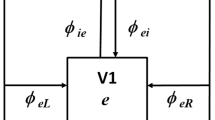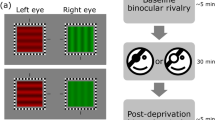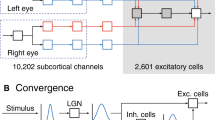Abstract.
Mathematical or computational models of activity–dependent neural competition typically impose competition in anatomically fixed networks by the use of synaptic normalisation, for which there is very little experimental support. Recent experimental evidence, however, strongly implicates neurotrophic factors in neural plasticity and competition, in addition to their well–known potent effects on neurite outgrowth and synaptogenesis. We therefore present a simple, mathematical model of anatomical segregation induced by activity–dependent competition for a limited supply of a neurotrophic factor provided by target cells to afferents. We extract the behaviour of the model in various regimes, in which the neurotrophic factor is either in critical supply or in abundant supply, by a combination of analytical and numerical methods, and study the effects of correlations in afferent inputs on competition. We apply the model to three different systems: ocular dominance column formation; elimination of polyneuronal innervation at the vertebrate neuromuscular junction; trigeminal brain stem whisker–related structure formation. Several classes of related predictions emerge, including the prediction that kittens reared with strabismus should require a higher concentration of neurotrophic factor infusion into their primary visual cortex than normally reared cats in order to induce the anatomical desegregation of ocular dominance columns. We also speculate on the mechanisms of support of inhibitory rather than excitatory neurons, and suggest the existence of a separate, Cl\(^-\)–mediated activity–dependent pathway for their neurotrophic support.
Similar content being viewed by others
Author information
Authors and Affiliations
Additional information
Received: 17 May 1996 / Accepted in revised form: 27 July 1996
Rights and permissions
About this article
Cite this article
Elliott, T., Shadbolt, N. A mathematical model of activity–dependent, anatomical segregation induced by competition for neurotrophic support . Biol Cybern 75, 463–470 (1996). https://doi.org/10.1007/s004220050311
Issue Date:
DOI: https://doi.org/10.1007/s004220050311




